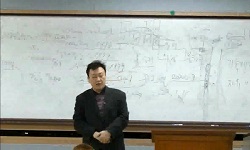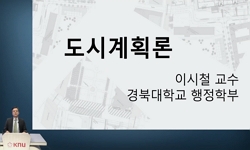This article purports to answer a question about the relationship between religion and society through an analysis of the Corpus Christi Cycle. The main argument of this article is that the meaning of the "Body of Christ" which is the central figure i...
http://chineseinput.net/에서 pinyin(병음)방식으로 중국어를 변환할 수 있습니다.
변환된 중국어를 복사하여 사용하시면 됩니다.
- 中文 을 입력하시려면 zhongwen을 입력하시고 space를누르시면됩니다.
- 北京 을 입력하시려면 beijing을 입력하시고 space를 누르시면 됩니다.
성체축일 순환극(Corpus Christi Cycle)과 '그리스도의 몸'의 의미의 정치학 = Corpus Christi Cycle and the Politics of the Meaning of the "Body of Christ"
한글로보기부가정보
다국어 초록 (Multilingual Abstract)
This article purports to answer a question about the relationship between religion and society through an analysis of the Corpus Christi Cycle. The main argument of this article is that the meaning of the "Body of Christ" which is the central figure in the Corpus Christ Cycle was not fixed at all but has always been changed in the course of history. The Corpus Christi Cycle is a good example of the complex and multiple signification of the Body of Christ.
This article first surveys the historical origin of the Corpus Christ Feast. It examines the process of the transmutation of the meaning of the Body of Christ and reveals that the meaning of the Body of Christ was constructed as much by the practical need of the clergy as by the basic principle of Christianity. Once the Corpus Christi Feast was established as a public holiday by Rome, the Body of Christ came to have another meaning. As the clergy taught that the Body of Christ had a very special value and efficacy, the proximity to the Body of Christ during the Corpus Christi Procession became a visible sign of power and authority on the part of the lay people. In the cities where the civic oligarchy had achieved autonomy, the Body of Christ was appropriated by the civic oligarchy who desired to show off their religious leadership as well as their political and economical leadership. Through the performance of the Corpus Christi Cycle the civic government could prove that it could offer religious education to the lay people and that the city under the rule of the civic government had a good deal of religious fervor. On the other hand, as the city became the backdrop of the drama, the city itself played a role. When the play shows a scene which reminds of a royal procession in the same place where the king used to visit, the contemporary political reality is foregrounded rather than the biblical hermeneutics underlying the scene. Similarly, when the actors who are the guildsmen of the city make complaints about the hardships they suffer, the scene suggests to the audience the hardships they are experiencing in reality. Human body and the guildsmen's desire gets more attention than the Christ's Body and the message of its saving grace.
In the Corpus Christi Cycle, the meaning of the Body of Christ is compromised by the politics of the three different agencies of the play: the clergy, the civic government and the guildsmen or the common citizens. And the Body of Christ comes to have a more complex and multi-layered meaning
목차 (Table of Contents)
- Ⅰ. 성체축일 순환극의 종교성과 ‘몸’의 문제
- Ⅱ. 성체축일의 기원과 몸의 상징
- Ⅲ. 그리스도의 몸과 공동체
- Ⅳ. 몸의 의미의 전유와 재전유
- Ⅰ. 성체축일 순환극의 종교성과 ‘몸’의 문제
- Ⅱ. 성체축일의 기원과 몸의 상징
- Ⅲ. 그리스도의 몸과 공동체
- Ⅳ. 몸의 의미의 전유와 재전유
동일학술지(권/호) 다른 논문
-
Lady Philosophy's Therapeutic Method
- 중세영문학연구회
- Phillips, Philip Edward
- 2002
-
Lioba - dilecta Bonifatii. Eine Liebesgeschichte im 8. Jahrhundert?
- 중세영문학연구회
- Lee, Deug-Su
- 2002
-
- 중세영문학연구회
- Kim, Jaehyun
- 2002
-
A Study on Geogoð in Old English Poetry
- 중세영문학연구회
- Lee, Dongill
- 2002




 RISS
RISS






